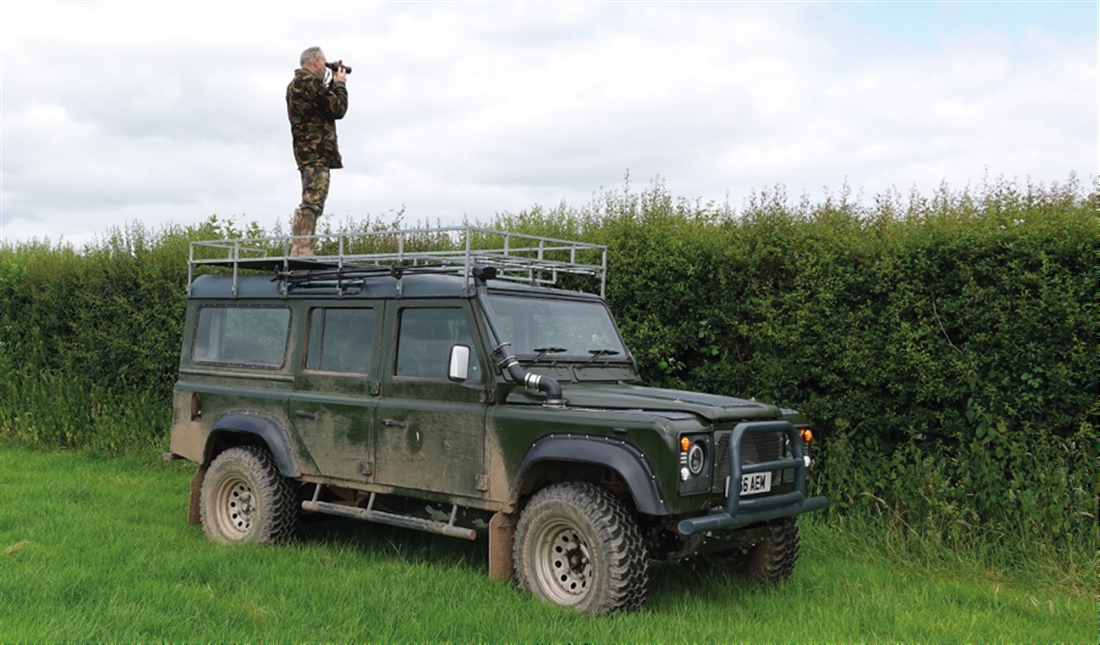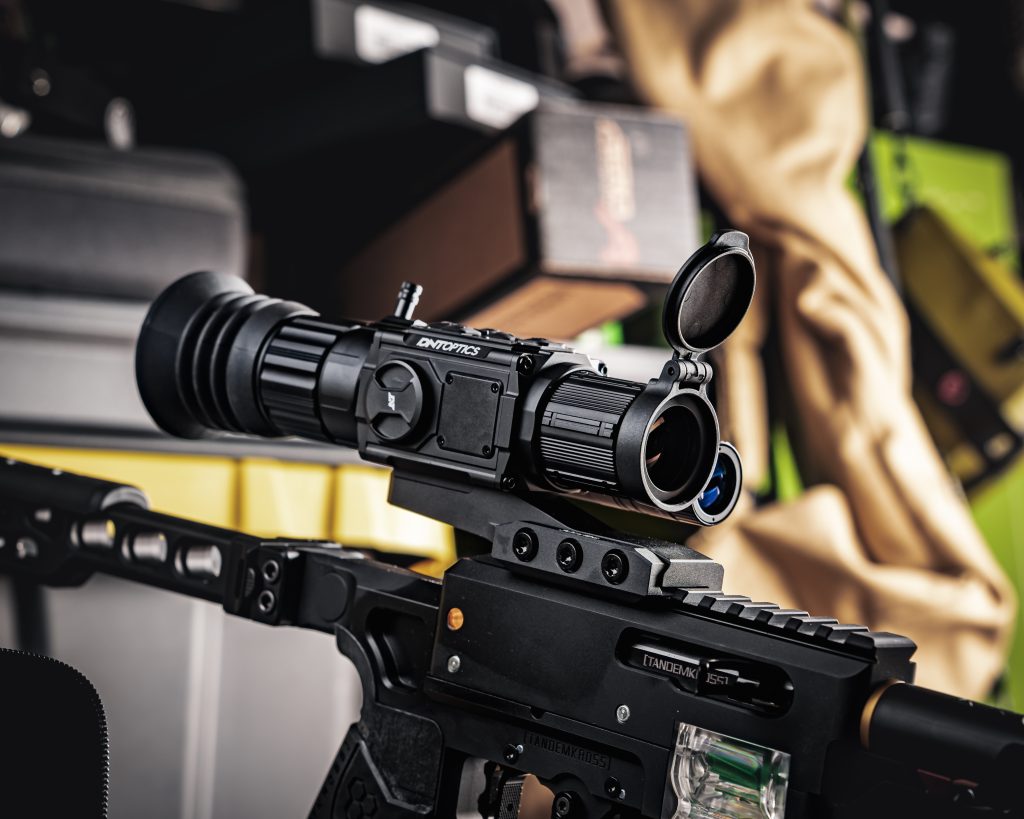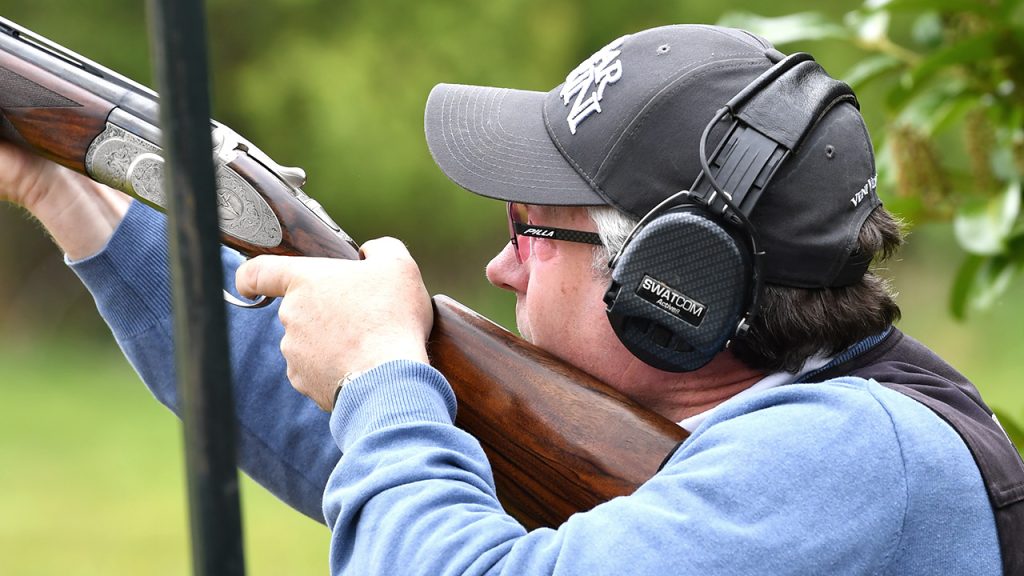SHOOTING TRANSPORT
Patrick Hook’s experience as a race-car engineer comes in handy as he transforms a worn-out Land Rover into the perfect shooting truck

One of the most important aspects of undertaking pest control over anything more than walking distance from your house is having appropriate transportation. The exact requirement will depend on several factors: what the terrain is like where you shoot, how wide an area you cover and what you need to carry. If you operate on your own you may find that a quad is more than up to the job. But when you have to be able to carry more than one passenger it’s not going to be your best option. If you rarely leave paved roads then a car might be viable, but as soon as mud enters the equation the choices narrow mostly in favour of some kind of 4×4, especially if you need to be able to carry big carcasses like red deer. Many years ago I realised that while my Subaru Impreza would get me to my destination very quickly, it wasn’t the right tool for the job. Having spent most of my career as a race-car engineer I therefore decided to build my own dedicated shooting truck – mostly because I wanted to. At the time my budget was severely constrained, so just going out and buying a Toyota Hilux wasn’t on the radar. Besides, what would the fun be in doing that? Since just about every component for a Land Rover is available from numerous aftermarket suppliers, that was the route I took. A friend happened to be selling an MOT-failure 110 Defender at the time, so I bought that as a donor vehicle and set to.
To cut a very long story short, I bought a new galvanised chassis and built the whole truck from the ground up. The only component that hasn’t been either replaced or reconditioned is the steering box. The build philosophy was threefold: it must not corrode, it must not get stuck and it must fulfil all my shooting needs. Anyone with Land Rover familiarity will know that once they’ve been on the road for a few years they begin converting into large piles of rust and rot held together by a few pieces of heavy engineering. To combat this, with the exception of a handful of specialist fasteners every single nut and bolt on the entire vehicle has been replaced with stainless steel, as have several major body parts, like the heel and toe panels.
STEEL STRENGTH
Over the years I’ve heard endless wails of woe from people who complain that stainless is weaker than ferrous steel. Let me just say that they don’t know what they’re talking about. The right grade of material is key. Get that (and the correct assembly lubricant) right, and all will be fine and dandy. The ‘not getting stuck’ aspect was dealt with in several ways. First, the engine (a 200 Tdi) needed adequate grunt. This was provided via a variable geometry turbo coupled to a full-width Cosworth intercooler. It’s not fast, but it never grumbles when it meets a hill. After that, the power goes through Detroit Truetrac limited-slip differentials at both ends and ends up turning some nice big BF Goodrich mud-terrain tyres. Then, as a backup, there’s a 9,000 lb winch mounted in the middle of the second-row seats via an enormous cross-member that bolts to the middle of the chassis. It’s not mounted on the front because if I get stuck in some horrible bog I want to pull myself back away from it, not drag myself further into the problem.
Not long after I started building the Defender I bought a 300 Tdi Discovery as interim transport. Since most of the farms my shooting partner Paul and I cover are criss-crossed with hedges, many of which are 10-12ft high, I need to be able to see over them. Driving this vehicle around, it didn’t take me long to realise that the best solution was to build a roof observation platform. I made one up and tried it out. It proved to be one of the best modifications I ever made to it, so having one on the Defender I was building was an absolute necessity. Coupled with high-lift suspension, it puts me a long way up.
COUNTRYSIDE CATAPULT
Having said that, I soon discovered that one of the problems with standing so far above the ground is that if your suspension is soft and one of your passengers gets in or out without warning, you risk being catapulted into the adjoining countryside. On the Discovery I simply added heavy-duty springs, but I wanted to go one better on the Defender. My solution was to fit a high-tech rear anti-roll bar. This has a locking wheel hub off a Series Land Rover at one end of a matching half shaft that acts as the roll bar. With the hub locked, you get four times the stiffness of a standard setup, resulting in much better road handling. With it unlocked you get full axle articulation. But the main thing from my point of view is that the vehicle is much more stable when I’m standing on top of it.
Another feature I wanted was a roof hatch so that Paul could watch the surrounding terrain while I slowly traversed the various farm tracks we patrol. I spent months fruitlessly trying to find one that was the right size, so I had to make my own. It’s positioned so that Paul can stand on a platform above the winch. The hatch lifts off so that he can observe to his heart’s content. He’s also close enough for me to hear him whisper driving instructions if he sees a fox or whatever. As I like to shoot off sticks, I have a pair of hooks mounted on the side of the roof rack so that I can grab them quietly rather than clatter around trying to haul them out from inside.
Since we tend to work at night, having sufficient light when you need it is another important issue. This could be because I’m trying to reverse near heavy (and expensive) farm equipment, or because I need to light up the landscape ahead of me. To this end, I have a pair of ultra-bright LED lamps on the back of the roof rack and a stupidly powerful light bar on the front.
My dog, Rufus, makes up the third member of our usual shooting party. He therefore has his own quarters permanently fitted behind the passenger seat. I don’t hunt with him. His role is to find any missing animals, so he stays in the truck until I need him. When I give the command he jumps out of the side door and rockets in whatever direction I give him. As soon as he picks up the scent he homes in and stands over the carcass in a “Dad, it’s over here” sort of way. I don’t want him to pick it up and bring it to me as I don’t want him catching mange or any other nasty affliction.
Anyone who has parked up for any length of time in the middle of winter will know that it can get cold very quickly. When Paul got back from one of his many exotic hunting trips abroad, he started raving about a diesel heater that one of his guides had fitted to his truck. To keep him quiet I added one to the build. It lives in a stainless locker behind one of the rear wheels and blows hot air into the cabin. It’s partnered by an uprated standard heating system that has several levels of fan speed as well as a bilge blower in the intake duct, allowing me to demist the screen with a mini-hurricane at a moment’s notice.
Another feature I was determined to add was what I call a ‘gun bag light’. When I’m putting the rifle away I want to be able to see that it’s in a safe state, but at the same time I don’t want to light up the whole inside of the truck. Unless I have extra passengers the slip lies across the second-row footwell, so just inside the door pillar behind the driver’s seat there’s a switch that activates a small lamp. It’s really easy to access and makes things so much easier and safer.
When the cabin itself needs light, such as when I want to check a land boundaries map, I have a choice. Above my head there’s a lamp with two sets of switches. One turns it on and off, and the other selects between red (dull) and white (bright) illumination. That way I can choose how obvious I want to make myself.
In addition to what I have described here, there are far more features on the truck than I’ve got room to discuss. Suffice it to say that now that I’ve got it on the road, I’m delighted with it!
Related Articles
Get the latest news delivered direct to your door
Subscribe to Rifle Shooter
Elevate your shooting experience with a subscription to Rifle Shooter magazine, the UK’s premier publication for dedicated rifle enthusiasts.
Whether you’re a seasoned shot or new to the sport, Rifle Shooter delivers expert insights, in-depth gear reviews and invaluable techniques to enhance your skills. Each bi-monthly issue brings you the latest in deer stalking, foxing, long-range shooting, and international hunting adventures, all crafted by leading experts from Britain and around the world.
By subscribing, you’ll not only save on the retail price but also gain exclusive access to £2 million Public Liability Insurance, covering recreational and professional use of shotguns, rifles, and airguns.
Don’t miss out on the opportunity to join a community of passionate shooters and stay at the forefront of rifle technology and technique.




